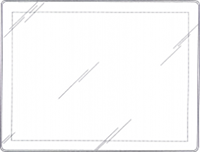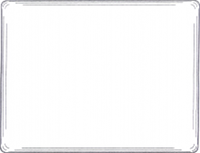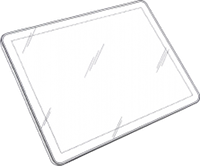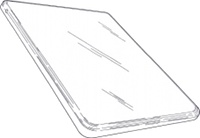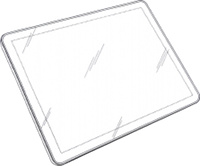 Samsung has been relatively quiet about their loss to Apple in German court which resulted in a sales ban on their flagship Galaxy Tab 10.1 tablet.
Samsung has been relatively quiet about their loss to Apple in German court which resulted in a sales ban on their flagship Galaxy Tab 10.1 tablet.
While they did immediately appeal, statements from the company have focused more on other patent fights between the two companies around the world. That may be because they're waiting for the results of a challenge to Apple's Community Design rights for the iPad.
Speaking to the Korea Times about a pending application to nullify Apple's Community Design, a Samsung representative said "Apple claims that the iPad's design is exclusively its own, but the design existed long before the iPad." Samsung filed their challenge with the EU Office for Harmonization in the Internal Market in August.
In case you haven't seen them already, these images from Apple's Community Design filing sum it up:
Setting aside Samsung's assertion that Apple's basic design isn't even original, allowing a company exclusive use of such a basic, and primarily functional, design is problematic.
Let's look at the individual components. Apple emphasizes the device being thin. Tablet makers have been trying to do that for years. Their failure to do so wasn't a design decision. It was a limitation of the technology being used.
How about round corners? Once again it's an obvious design feature manufacturers have been using for years. Round corners make a device less susceptible to damage and less damaging to the user and his environment as well.
Then there is the flat front and back of the device. Obviously you're not going to make a tablet with a rounded back since it would be more difficult to hold and nearly impossible to use when set on a flat surface.
And the only reason the front would be curved is if you, for some reason, decided to take a monumental step backwards to use a CRT display. The front bezel around the display, on the other hand, would be a given regardless of the display technology.
Finally, there are the digital and analog ports around the outside edge. Where else would you put them? On the front they would be difficult to integrate into a dock and on the back they would be useless whenever the tablet is laid down.
In order to avoid infringing on Apple's protected design, Samsung would have to intentionally make bad design decisions for their tablets. It's hard to understand how that protects anyone who doesn't own stock in Apple.
Speaking to the Korea Times about a pending application to nullify Apple's Community Design, a Samsung representative said "Apple claims that the iPad's design is exclusively its own, but the design existed long before the iPad." Samsung filed their challenge with the EU Office for Harmonization in the Internal Market in August.
In case you haven't seen them already, these images from Apple's Community Design filing sum it up:
Setting aside Samsung's assertion that Apple's basic design isn't even original, allowing a company exclusive use of such a basic, and primarily functional, design is problematic.
Let's look at the individual components. Apple emphasizes the device being thin. Tablet makers have been trying to do that for years. Their failure to do so wasn't a design decision. It was a limitation of the technology being used.
How about round corners? Once again it's an obvious design feature manufacturers have been using for years. Round corners make a device less susceptible to damage and less damaging to the user and his environment as well.
Then there is the flat front and back of the device. Obviously you're not going to make a tablet with a rounded back since it would be more difficult to hold and nearly impossible to use when set on a flat surface.
And the only reason the front would be curved is if you, for some reason, decided to take a monumental step backwards to use a CRT display. The front bezel around the display, on the other hand, would be a given regardless of the display technology.
Finally, there are the digital and analog ports around the outside edge. Where else would you put them? On the front they would be difficult to integrate into a dock and on the back they would be useless whenever the tablet is laid down.
In order to avoid infringing on Apple's protected design, Samsung would have to intentionally make bad design decisions for their tablets. It's hard to understand how that protects anyone who doesn't own stock in Apple.

